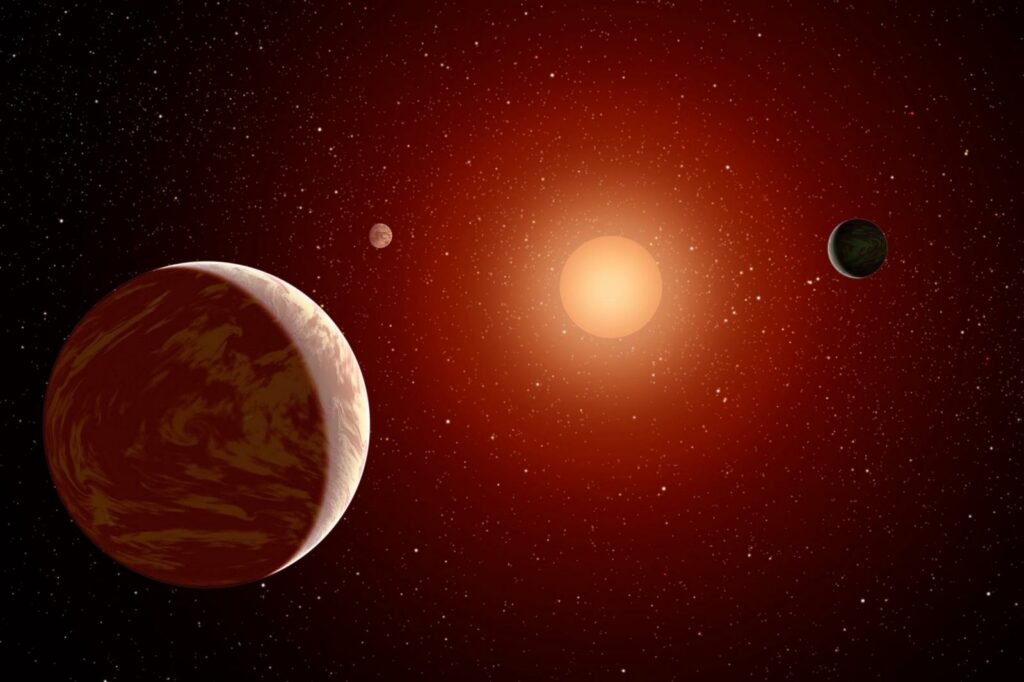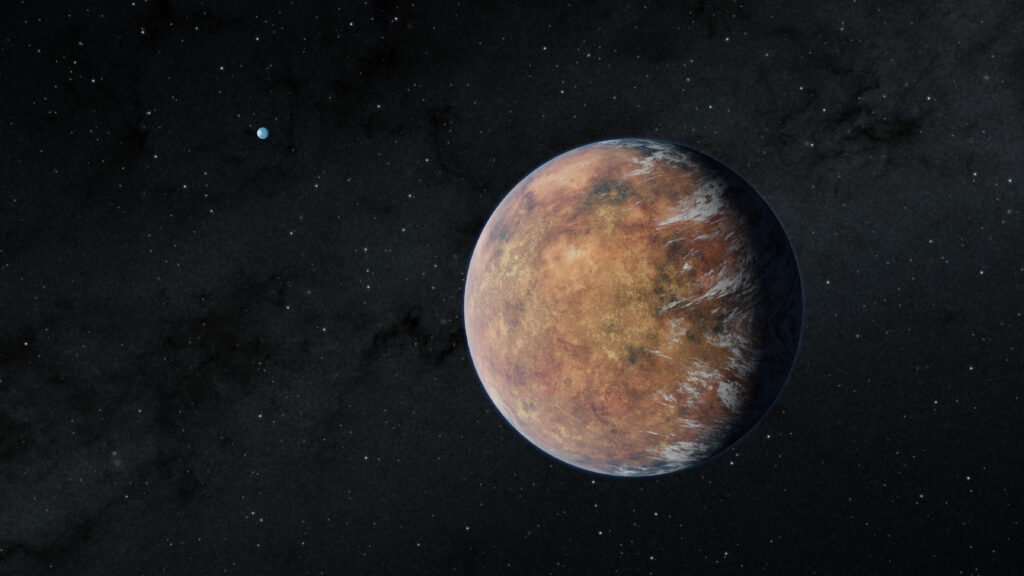Using data collected by the TESS Space Telescope, astronomers have discovered a previously unknown Earth-like exoplanet. Its orbit passes in the habitable zone around the red dwarf TOI 700.
TOI 700 Star System
TOI 700 is located at a distance of 101 light years from Earth in the direction of the constellation Doradus. In 2020, TESS discovered three exoplanets in this system, designated TOI 700 b, TOI 700 c, and TOI 700 d.

The inner exoplanet TOI 700 b is slightly smaller in size and slightly larger in mass than Earth. It makes one orbit around the star in 10 days. TOI 700 с is much larger. It is 2.5 times larger and 7.5 times more massive than our planet. Its period of orbiting is 16 days. The orbits of both named exoplanets pass too close to the parent star, which is why their illuminated hemispheres (due to tidal capture, they are most likely always turn to the red dwarf with the same side) are warmed up to too high temperatures for the life we are used to there to exist.
TOI 700 d is much more interesting. Its radius is 1.2, and its mass is 1.7 times that of Earth, it makes one orbit around its star in 37 days. According to astronomers, the surface of TOI 700 d receives approximately 86% of the energy that the Earth receives from the Sun. Thus, it is located in the habitable zone — a region where, in the presence of suitable atmospheric conditions, liquid water can exist on the surface of an exoplanet.
Third planet from the red dwarf
Back in 2021, astronomers suspected that there was at least one more exoplanet in this system. But only now TESS has managed to confirm its existence. The newly discovered exoplanet is designated TOI 700 e, it is the third in this system (that is, its orbit passes between the orbits of TOI 700 c and TOI 700 d).

The radius of the TOI 700 e is only 5% smaller than the radius of the Earth. Astronomers have not yet been able to determine its mass, but given its size, there is no doubt that it is a rocky body. The TOI 700 e circulation period is 27 days. This means that its orbit is also located in the habitable zone, more precisely, in its optimistic part.
Astronomers define the optimistic habitable zone as the range of distances from a star at which, at some point in history, an exoplanet could have liquid water on the surface. This area extends on both sides of the conservative habitable zone, where researchers suggest that liquid water is capable of existing for most of the planet’s life. The orbit of TOI 700 d is just passing in this region.
In any way, the find is very important. Astronomers do not know many systems with several Earth-like planets in the habitable zone. So in the future, the TOI 700 will become a subject for new observations, in which the James Webb Telescope may also take part.
Earlier we wrote about how the TESS telescope discovered a hot Jupiter near a rapidly rotating star.
According to https://www.nasa.gov
Follow us on Twitter to get the most interesting space news in time
https://twitter.com/ust_magazine

